Burak Kurkcu
Underactuated Control of Multiple Soft Pneumatic Actuators via Stable Inversion
Jun 07, 2024
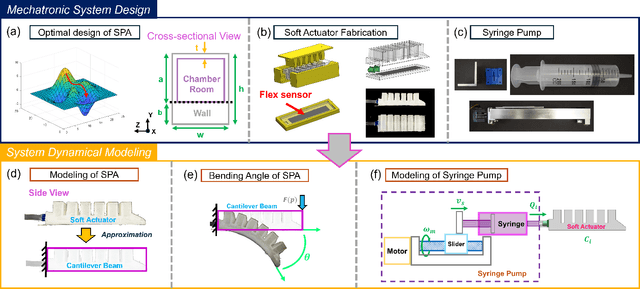
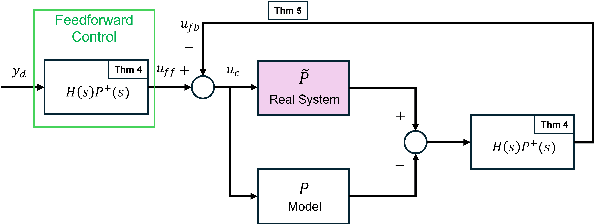
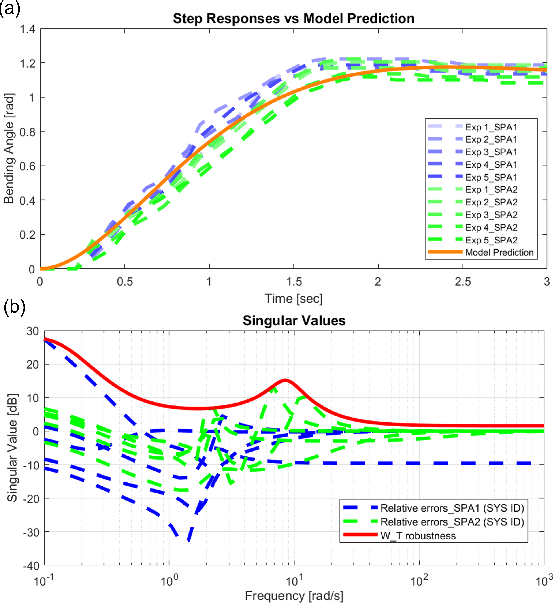
Abstract:Soft grippers, with their inherent compliance and adaptability, show advantages for delicate and versatile manipulation tasks in robotics. This paper presents a novel approach to underactuated control of multiple soft actuators, specifically focusing on the synchronization of soft fingers within a soft gripper. Utilizing a single syringe pump as the actuation mechanism, we address the challenge of coordinating multiple degrees of freedom of a compliant system. The theoretical framework applies concepts from stable inversion theory, adapting them to the unique dynamics of the underactuated soft gripper. Through meticulous mechatronic system design and controller synthesis, we demonstrate both in simulation and experimentation the efficacy and applicability of our approach in achieving precise and synchronized manipulation tasks. Our findings not only contribute to the advancement of soft robot control but also offer practical insights into the design and control of underactuated systems for real-world applications.
Nonlinear Parameter-Varying Modeling for Soft Pneumatic Actuators and Data-Driven Parameter Estimation
Nov 04, 2023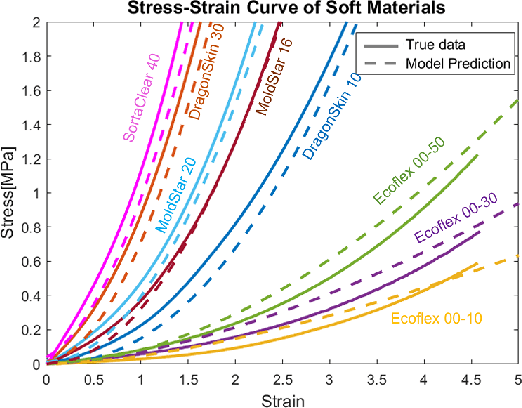
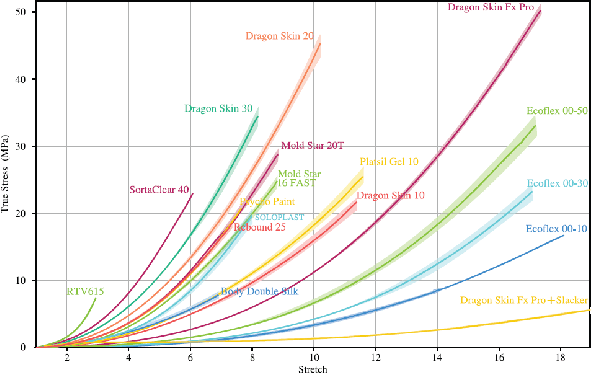
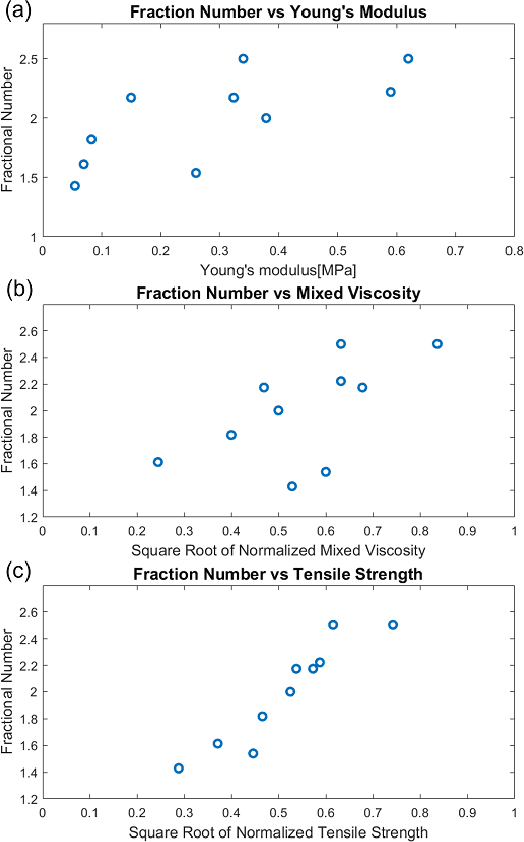
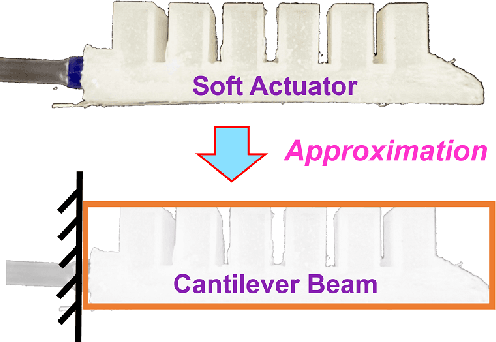
Abstract:Accurately modeling soft robots remains a challenge due to their inherent nonlinear behavior and parameter variations. This paper presents a novel approach to modeling soft pneumatic actuators using a nonlinear parameter-varying framework. The research begins by introducing Ludwick's Law, providing a more accurate representation of the complex mechanical behavior exhibited by soft materials. Three key material properties, namely Young's modulus, tensile stress, and mixed viscosity, are utilized to estimate the parameter inside the nonlinear model using the least squares method. Subsequently, a nonlinear dynamic model for soft actuators is constructed by applying Ludwick's Law. To validate the accuracy and effectiveness of the proposed method, experimental validations are performed. We perform several experiments, demonstrating the model's capabilities in predicting the dynamical behavior of soft pneumatic actuators. In conclusion, this work contributes to the advancement of soft pneumatic actuator modeling that represents their nonlinear behavior.
Approximated Modeling and Optimal Design for a Soft Pneumatic Actuator Considering the Force/Torque and System Controllability
Oct 19, 2023Abstract:Soft pneumatic actuators (SPAs) are widely employed to drive soft robots. However, their inherent flexibility offers both benefits and challenges. This property reduces their output force/torque and makes them hard to control. This paper introduces a new design method that enhances the actuator's performance and controllability. The complex structure of the soft actuator is simplified by approximating it as a cantilever beam. This allows us to derive a mechanical equation between input pressure to output torque. Additionally, a dynamical model is explored to understand the correlation between the natural frequency and dimensional parameters of the SPA. The design problem is then transformed into an optimization problem, using the mechanical equation as the objective function and the dynamical equation as a constraint. By solving this optimization problem, the optimal dimensional parameters are determined. Prior to fabrication, preliminary tests are conducted using the finite element method. Six prototypes are manufactured to validate the proposed approach. The optimal actuator successfully generates the desired force/torque, while its natural frequency remains within the constrained range. This work highlights the potential of using approximated models and optimization formulation to boost the efficiency and dynamic performance of soft pneumatic actuators.
Frequency Domain Analysis of Nonlinear Series Elastic Actuator via Describing Function
Oct 05, 2023



Abstract:Nonlinear stiffness SEAs (NSEAs) inspired by biological muscles offer promise in achieving adaptable stiffness for assistive robots. While assistive robots are often designed and compared based on torque capability and control bandwidth, NSEAs have not been systematically designed in the frequency domain due to their nonlinearity. The describing function, an analytical concept for nonlinear systems, offers a means to understand their behavior in the frequency domain. This paper introduces a frequency domain analysis of nonlinear series elastic actuators using the describing function method. This framework aims to equip researchers and engineers with tools for improved design and control in assistive robotics.
Control of Soft Pneumatic Actuators with Approximated Dynamical Modeling
Oct 03, 2023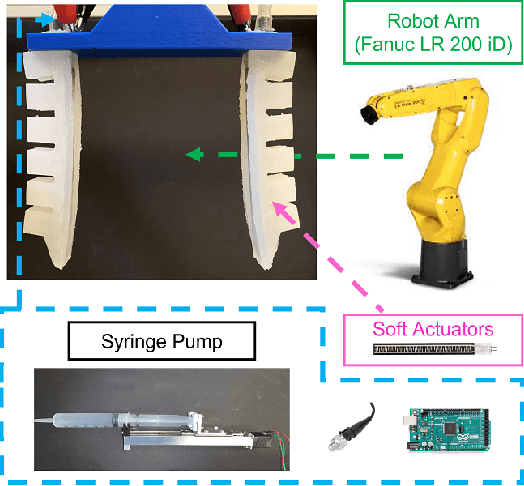
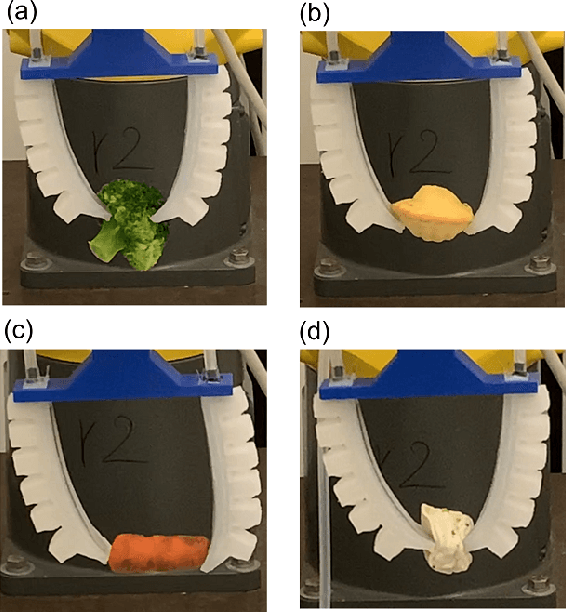
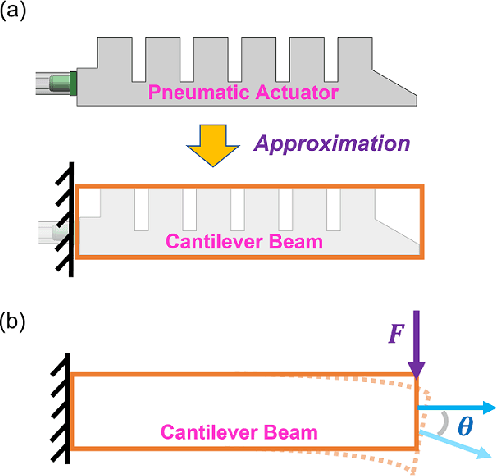
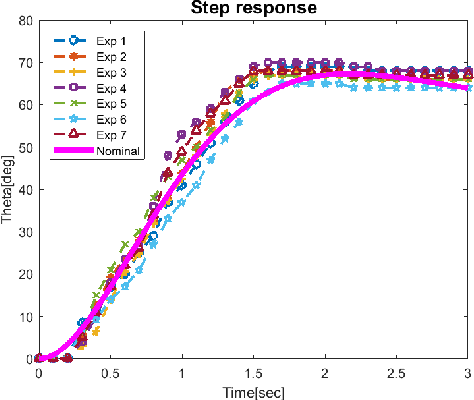
Abstract:This paper introduces a full system modeling strategy for a syringe pump and soft pneumatic actuators(SPAs). The soft actuator is conceptualized as a beam structure, utilizing a second-order bending model. The equation of natural frequency is derived from Euler's bending theory, while the damping ratio is estimated by fitting step responses of soft pneumatic actuators. Evaluation of model uncertainty underscores the robustness of our modeling methodology. To validate our approach, we deploy it across four prototypes varying in dimensional parameters. Furthermore, a syringe pump is designed to drive the actuator, and a pressure model is proposed to construct a full system model. By employing this full system model, the Linear-Quadratic Regulator (LQR) controller is implemented to control the soft actuator, achieving high-speed responses and high accuracy in both step response and square wave function response tests. Both the modeling method and the LQR controller are thoroughly evaluated through experiments. Lastly, a gripper, consisting of two actuators with a feedback controller, demonstrates stable grasping of delicate objects with a significantly higher success rate.
 Add to Chrome
Add to Chrome Add to Firefox
Add to Firefox Add to Edge
Add to Edge